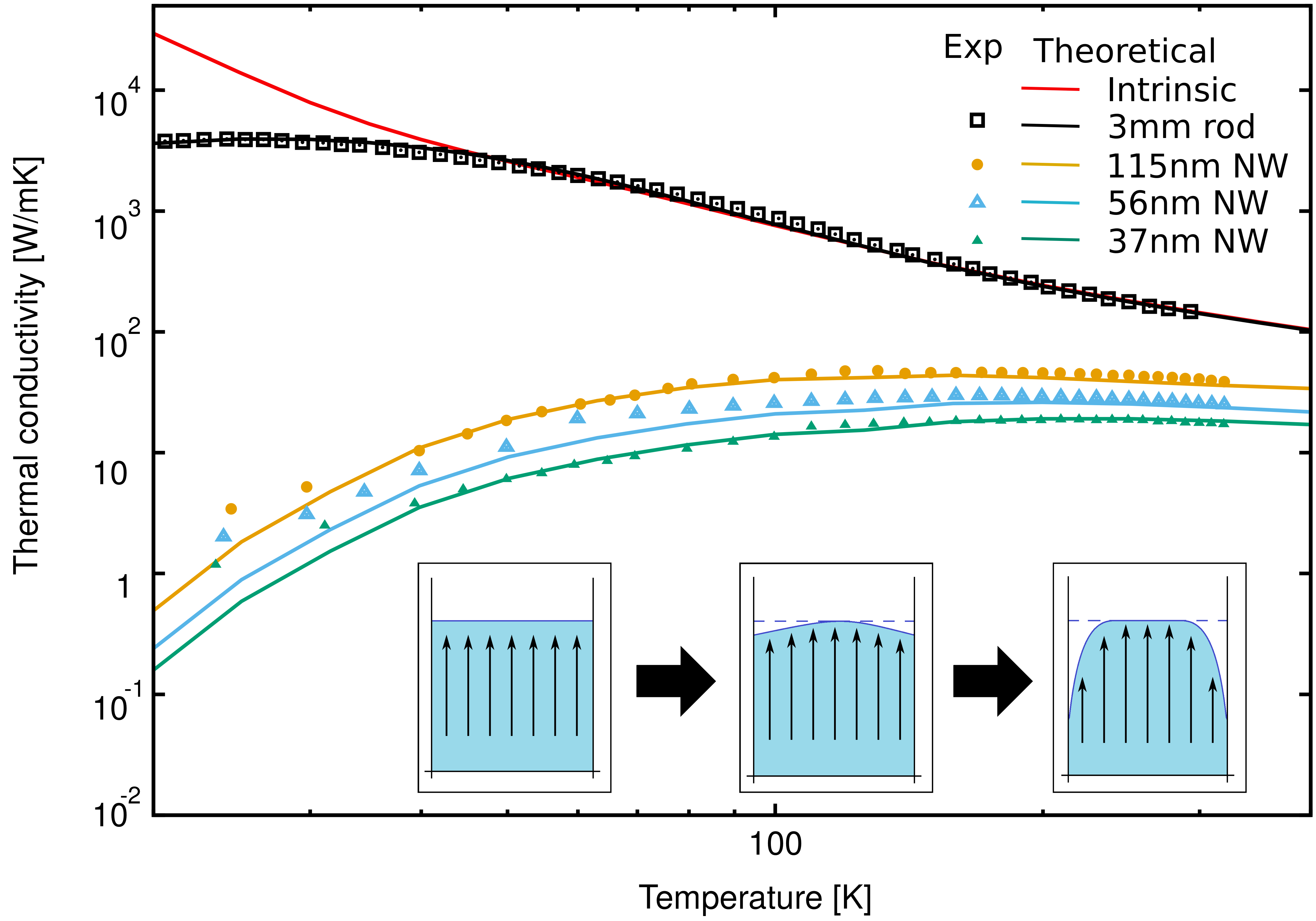KCM hydodynamic equation in finite element simulations
In recent years the nanoTransport Group of Universitat Autònoma de Barcelona has been developing a theoretical framework to study thermal transport at the nanoscale in complex devices. While simple geometries like nanowires or thin films can be predicted from classical models with effective parameters or suppression functions, complex geometries of real devices requires more specific treatment. The direct solution of the BTE in such cases is of high complexity and computationally unachievable nowadays. The hydrodynamic model proposed by the nanoTransport Group is providing good agreement with experimental setups in collaboration with the Quantum Engineered Systems & Technology group from Purdue University.
The implementation of the KCM hydrodynamic equation:
requires to obtain the bulk parameters κ and from first principles simulations (see USER GUIDE-INPUT FILE). The default output file will inculde such parameters.
The Eq.1 needs to be implemented in a finite elements simulator as ANSYS or COMSOL in 1D, 2D or 3D.
The boundary effects in the hydrodynamic model are introduced defining the flux at the boundaries as:
At the moment the hydrodynamic KCM equation is not publicly included in any finite elements software to be used for regular users. You will have to write the equation by yourself or ask us for collaboration.
